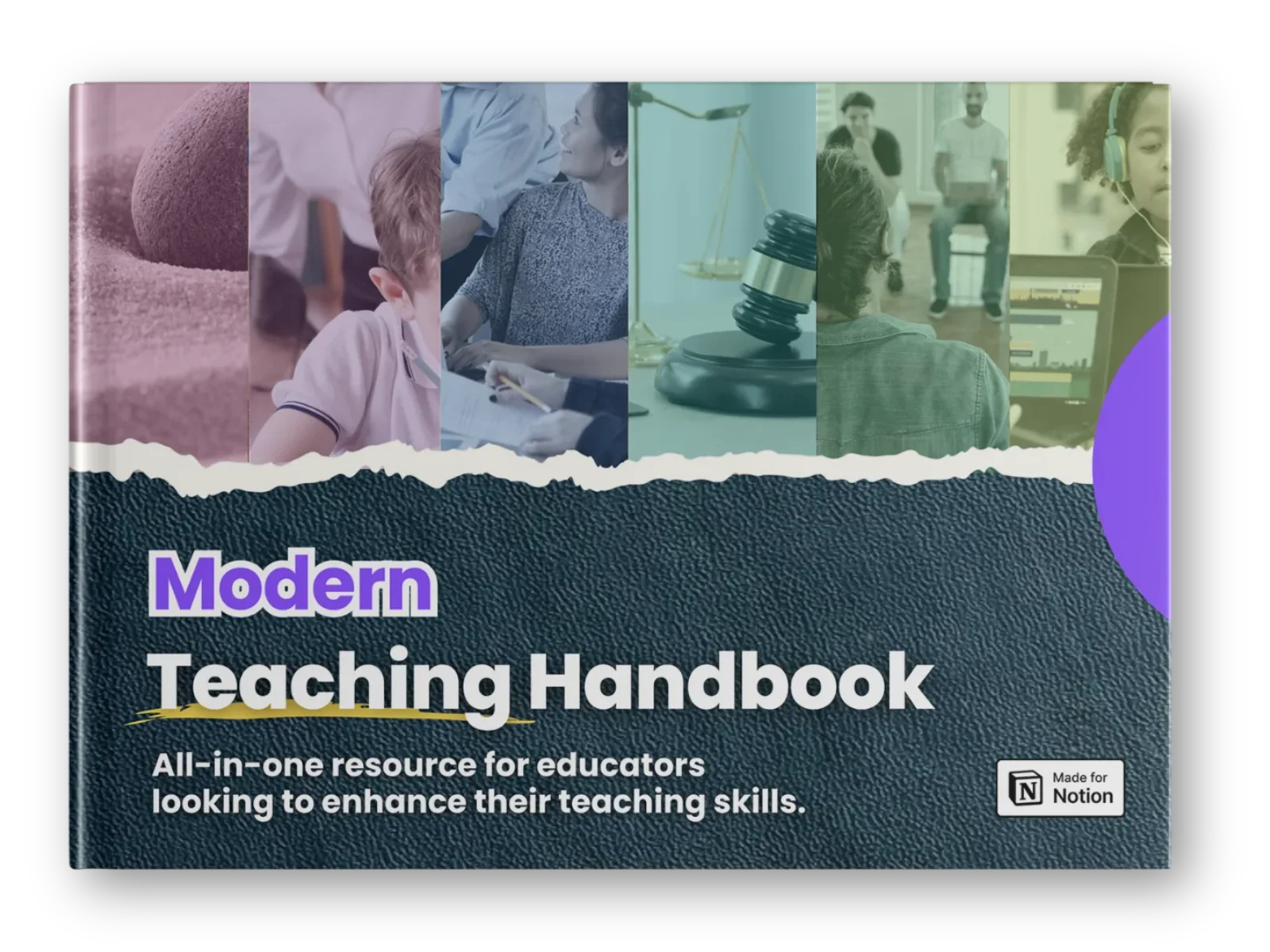Modern Teaching Handbook
Master modern education with the all-in-one resource for educators. Get your free copy now!



Every Teacher Should Be CPR Certified: Here's Why
Every Teacher Should Be CPR Certified: Here's Why
Every Teacher Should Be CPR Certified: Here's Why

Article by
Milo
ESL Content Coordinator & Educator
ESL Content Coordinator & Educator
All Posts
Teachers are superheroes in disguise, molding young minds, mediating conflicts and providing nurturing environments for their students. But what happens in an emergency where children's lives could be at stake? That's where CPR (Cardiopulmonary Resuscitation) training comes into its own. Having teachers undergo this training could prove important in creating truly safe schools. Knowledge is power after all, and every teacher should possess this superpower.
Teachers are superheroes in disguise, molding young minds, mediating conflicts and providing nurturing environments for their students. But what happens in an emergency where children's lives could be at stake? That's where CPR (Cardiopulmonary Resuscitation) training comes into its own. Having teachers undergo this training could prove important in creating truly safe schools. Knowledge is power after all, and every teacher should possess this superpower.
Modern Teaching Handbook
Master modern education with the all-in-one resource for educators. Get your free copy now!

Modern Teaching Handbook
Master modern education with the all-in-one resource for educators. Get your free copy now!

Modern Teaching Handbook
Master modern education with the all-in-one resource for educators. Get your free copy now!

The Vital Need for CPR Certification in Schools
We all hear "Safety first", but how many of us really understand what that means in schools? Sure, there may be fire drills and protocols aplenty, but how effective are those protocols really in ensuring safety for both teachers and students? CPR certification offers another means for ensuring all children in a school setting remain protected against emergencies, like an emergency cardiac arrest requires immediate action to save lives. Seconds can make all the difference between life and death. Sudden cardiac arrest affects students, staff, and visitors equally. The American Heart Association estimates that 350,000 out-of-hospital cardiac arrests take place annually in the US alone, and it would be fantastic if one of your teachers could know exactly what to do to save lives. Training educators in CPR is important in closing one of our schools' safety gaps.

Teachers as First Responders
Think quick, who do you see spending the most time with kids outside their homes? Chances are, teachers will come up. Being so close puts teachers in an excellent position when emergencies arise involving students. Whether it be playground accidents, allergic reactions, or sudden medical episodes, they are often the first responders on the scene and assess. Basic CPR classes give teachers the confidence and skills necessary for acting quickly during critical moments when emergency services arrive. Their calm responses can replace confusion and panic while ensuring emergency services arrive to find everything stabilized as much as possible.
The Importance of Comprehensive CPR Training in Handling Critical Situations
Asserting yourself appropriately during life-threatening situations, whether administering an EpiPen for severe allergic reactions or providing CPR during cardiac emergencies, is an invaluable skill that could save countless lives. CPR training and hands-on classes give people the knowledge and confidence needed to act swiftly and effectively when confronted by high-stress situations. These training sessions not only cover basic techniques such as chest compressions and rescue breaths, but also introduce lifesaving tools like AEDs and EpiPens. Understanding the signs of distress, such as anaphylaxis or sudden cardiac arrest, empowers people to act decisively and reduce the risk of further injury or even death. CPR classes emphasize the significance of maintaining composure, assessing situations accurately, and working in collaboration with emergency services when every second counts. CPR training for teachers, parents, and anyone in caregiving roles combines technical knowledge with confidence to act, making them first responders capable of making a difference. Such skills not only save lives but also help form an atmosphere of preparedness and care in schools, workplaces, and communities.
The Ripple Effect of CPR Knowledge
One often-overlooked benefit of teacher CPR training is its wider impact on school communities. When teachers possess CPR skills, it decreases anxiety among parents, students, and staff about emergencies. Parents can feel secure knowing their children are being cared for appropriately by CPR-trained educators. Students perceive their teachers as capable protectors. The entire school ecosystem enjoys greater security, not to mention that CPR-certified teachers can create an atmosphere of preparedness in schools. Hearing them discuss their training could inspire older peers or classmates to become certified themselves, creating an entire network of lifesavers within schools.
Training Doesn’t Have to Be a Burden
CPR certification courses may seem a nuisance to teachers with their already full schedules of lesson plans, grading, and extracurricular commitments, but CPR certification courses are actually quite accessible. With many organizations providing flexible, time-efficient training designed specifically for educators. With options ranging from in-person classes and hybrid and online learning modules suited for educators available at virtually every location. Schools may even bring trainers directly onto campus, so participation is even easier for busy staff. The training usually lasts a few hours but leaves an impact.

Conclusion
Teachers already shape our future, shouldn't they also have the tools necessary to save lives in the present? CPR training for educators is long overdue as an acknowledgement of what it takes to be an effective modern-day mentor and protector. Empowering teachers with confidence when responding in emergencies not only benefits individuals, it improves educational environments for everyone involved. Even small commitments have major ramifications. If we value safety in schools, CPR certification will give teachers another way of showing it.
The Vital Need for CPR Certification in Schools
We all hear "Safety first", but how many of us really understand what that means in schools? Sure, there may be fire drills and protocols aplenty, but how effective are those protocols really in ensuring safety for both teachers and students? CPR certification offers another means for ensuring all children in a school setting remain protected against emergencies, like an emergency cardiac arrest requires immediate action to save lives. Seconds can make all the difference between life and death. Sudden cardiac arrest affects students, staff, and visitors equally. The American Heart Association estimates that 350,000 out-of-hospital cardiac arrests take place annually in the US alone, and it would be fantastic if one of your teachers could know exactly what to do to save lives. Training educators in CPR is important in closing one of our schools' safety gaps.

Teachers as First Responders
Think quick, who do you see spending the most time with kids outside their homes? Chances are, teachers will come up. Being so close puts teachers in an excellent position when emergencies arise involving students. Whether it be playground accidents, allergic reactions, or sudden medical episodes, they are often the first responders on the scene and assess. Basic CPR classes give teachers the confidence and skills necessary for acting quickly during critical moments when emergency services arrive. Their calm responses can replace confusion and panic while ensuring emergency services arrive to find everything stabilized as much as possible.
The Importance of Comprehensive CPR Training in Handling Critical Situations
Asserting yourself appropriately during life-threatening situations, whether administering an EpiPen for severe allergic reactions or providing CPR during cardiac emergencies, is an invaluable skill that could save countless lives. CPR training and hands-on classes give people the knowledge and confidence needed to act swiftly and effectively when confronted by high-stress situations. These training sessions not only cover basic techniques such as chest compressions and rescue breaths, but also introduce lifesaving tools like AEDs and EpiPens. Understanding the signs of distress, such as anaphylaxis or sudden cardiac arrest, empowers people to act decisively and reduce the risk of further injury or even death. CPR classes emphasize the significance of maintaining composure, assessing situations accurately, and working in collaboration with emergency services when every second counts. CPR training for teachers, parents, and anyone in caregiving roles combines technical knowledge with confidence to act, making them first responders capable of making a difference. Such skills not only save lives but also help form an atmosphere of preparedness and care in schools, workplaces, and communities.
The Ripple Effect of CPR Knowledge
One often-overlooked benefit of teacher CPR training is its wider impact on school communities. When teachers possess CPR skills, it decreases anxiety among parents, students, and staff about emergencies. Parents can feel secure knowing their children are being cared for appropriately by CPR-trained educators. Students perceive their teachers as capable protectors. The entire school ecosystem enjoys greater security, not to mention that CPR-certified teachers can create an atmosphere of preparedness in schools. Hearing them discuss their training could inspire older peers or classmates to become certified themselves, creating an entire network of lifesavers within schools.
Training Doesn’t Have to Be a Burden
CPR certification courses may seem a nuisance to teachers with their already full schedules of lesson plans, grading, and extracurricular commitments, but CPR certification courses are actually quite accessible. With many organizations providing flexible, time-efficient training designed specifically for educators. With options ranging from in-person classes and hybrid and online learning modules suited for educators available at virtually every location. Schools may even bring trainers directly onto campus, so participation is even easier for busy staff. The training usually lasts a few hours but leaves an impact.

Conclusion
Teachers already shape our future, shouldn't they also have the tools necessary to save lives in the present? CPR training for educators is long overdue as an acknowledgement of what it takes to be an effective modern-day mentor and protector. Empowering teachers with confidence when responding in emergencies not only benefits individuals, it improves educational environments for everyone involved. Even small commitments have major ramifications. If we value safety in schools, CPR certification will give teachers another way of showing it.
Modern Teaching Handbook
Master modern education with the all-in-one resource for educators. Get your free copy now!

Modern Teaching Handbook
Master modern education with the all-in-one resource for educators. Get your free copy now!

Modern Teaching Handbook
Master modern education with the all-in-one resource for educators. Get your free copy now!

Table of Contents
Modern Teaching Handbook
Master modern education with the all-in-one resource for educators. Get your free copy now!
2025 Notion4Teachers. All Rights Reserved.
2025 Notion4Teachers. All Rights Reserved.
2025 Notion4Teachers. All Rights Reserved.
2025 Notion4Teachers. All Rights Reserved.







